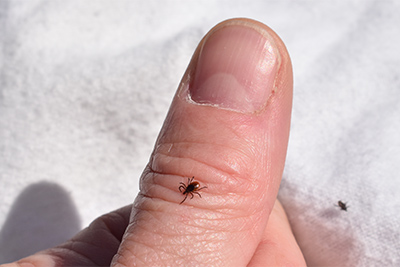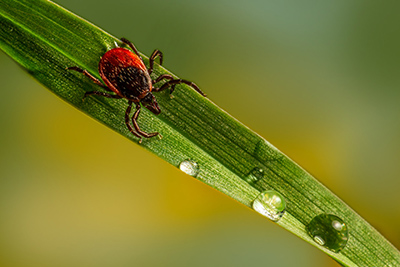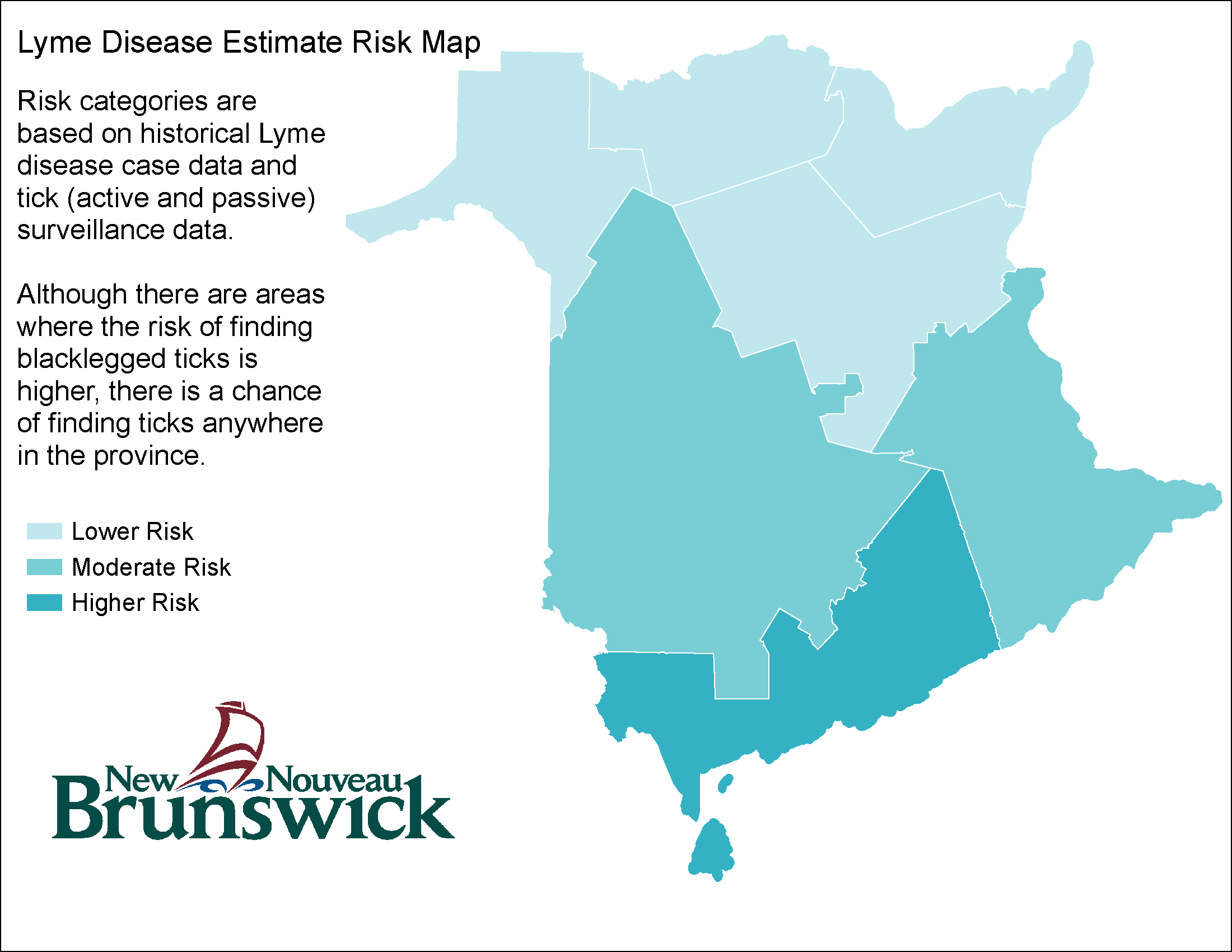Ixodes scapularis or blacklegged ticks are found in New Brunswick. Blacklegged ticks can transmit Lyme disease and other tick-borne diseases.
The best way to protect yourself is to prevent tick bites.
Tick facts
More information about ticks and how to identify them

Prevent tick bites
Learn how to protect yourself

Check for ticks
Do daily full body tick checks after being outdoors

Remove ticks and act
Remove ticks immediately and watch for early symptoms of Lyme disease and tick-borne illness

Where ticks hide
Be Tick Smart and avoid being bitten by a tick when heading outside in areas where ticks can be found.

Make yards tick free
Learn how to reduce ticks around your home

Information for healthcare professionals
Health professionals are encouraged to further their knowledge of tick-borne illnesses
It is possible to be bitten by blacklegged tick anywhere in New Brunswick, the risk is highest in areas where blacklegged tick populations are established or could become established.
Blacklegged Tick Risk Areas are based on provincial tick surveillance data and are identified on a county level because it is difficult to exactly define the geographic limits of tick populations.
Although blacklegged ticks are more likely to be found within risk areas than in other parts of the province, the distribution of ticks within Blacklegged Tick Risk Areas is not uniform because suitable habitat is not found everywhere.

Consult your health care provider right away if you have been:
- bitten by a tick and develop symptoms of Lyme disease
- to an area where blacklegged ticks may be found and develop symptoms of Lyme disease
Blacklegged ticks (Ixodes scapularis) can transmit Lyme disease and other tick borne illness, including anaplasmosis, babesiosis, and Powassan virus disease.
- The most commonly reported symptom of Lyme disease is an expanding skin rash that typically begins at the site of the tick bite (erythema migrans rash). It slowly grows to more than 5 cm in diameter over several days.
- Other early symptoms may include flu like illness (fever, chills, fatigue, headache, swollen lymph nodes, muscle and joint aches).
- Symptoms may begin as soon as three days after a tick bite or can be as long as 30 days later.
- Lyme disease is diagnosed based on clinical symptoms and the risk of exposure to blacklegged ticks which carry Borrelia bacteria. Laboratory testing, for example blood test, are helpful if used correctly and performed with validated methods.
- Testing a tick that has bitten an individual does not help guide the diagnosis or treatment of Lyme disease and other tick borne illness. Removing attached ticks as soon as possible reduces the chance of infection. If you are bitten by a tick, watch for early symptoms of tick-borne illness.
- Early diagnosis and treatment of Lyme disease can prevent complications. Most cases of Lyme disease are treated successfully with a few weeks of antibiotics.
Lyme disease
More information about the disease, prevention, and treatment
- Lyme disease – Canada.ca (Information from the Public Health Agency of Canada)
eTick.ca
A public platform for image-based identification and population monitoring of ticks in Canada